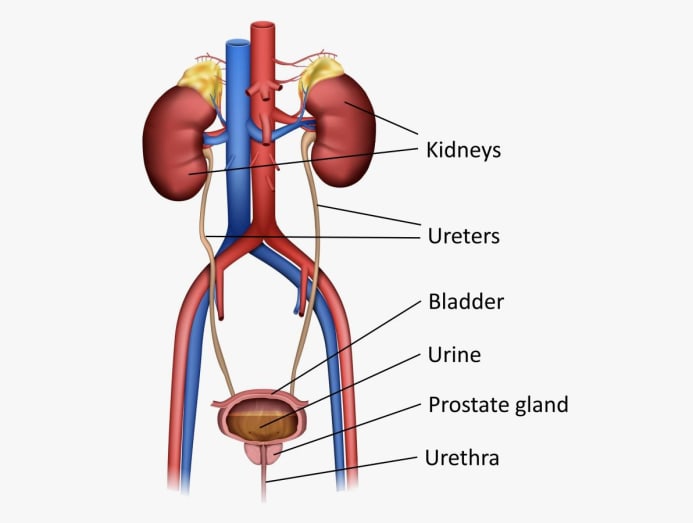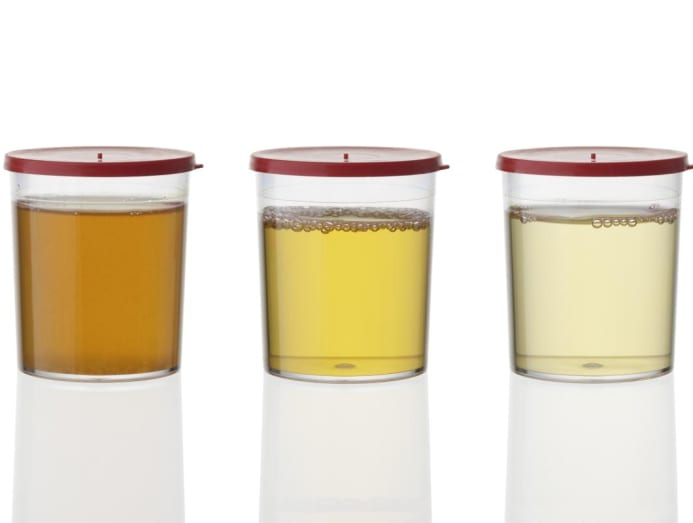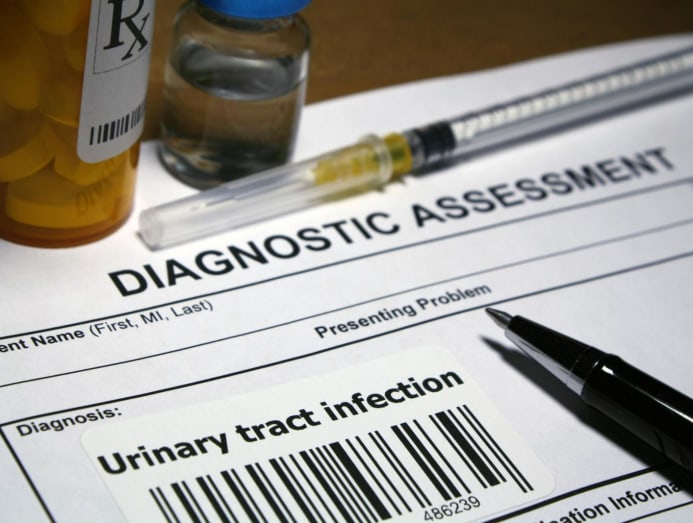What does the colour of your pee say about your health?
Most of the time, peculiar colours such as red, pink, blue and green could result from your food or medication. But there are instances when you should have a word with your doctor.

(Photo: iStock/Mars Bars)

This audio is generated by an AI tool.
From the colour of a subtle chrysanthemum tea to pale ale, urine comes in various shades of yellow – or if you haven’t been hydrating enough, light orange even.
What dyes your urine is a pigment called urochrome, which is actually broken-down haemoglobin, the protein in red blood cells, that gets filtered out of your bloodstream by your kidneys.
As you can imagine, your kidneys are the powerhouse that separate toxins from nutrients – and rebalance the levels of minerals such as potassium and calcium in your body. Each kidney is about the size of your fist but it works hard. Together, both kidneys filter about 114 litres to 142 litres of blood per day to produce about 1 litre to 2 litres of urine each day.
The resulting waste and excess water then pass through one of the two ureters, tiny tubes that connect the kidneys to the bladder (most people’s bladders can hold up to two cups of pee at a time). There, the urine is held until you’re ready to visit the bathroom. In the meantime, two urinary sphincter muscles that act like rubber bands around the opening of the bladder keep urine from leaking.

The process of urination starts when the bladder nerves, sensing a full bladder, signal to the brain that you need to go. This is followed by the bladder squeezing and tightening to push the pee through the urethra. At the same time, the brain gets the urinary sphincter muscles to relax to let urine through.
And voila, relief – until you see an unusual colour in your pee. Here’s what the different urine colours may mean.
NEON YELLOW OR ORANGE URINE
As mentioned earlier, urine is coloured by urochrome and this pigment gets diluted the more water you drink. Generally, the accepted urine colour ranges from light to dark yellow, although you should aim for the lighter end of the spectrum. But don’t go overboard and shoot for clear urine either as drinking too much water can unbalance the electrolytes in your blood and lead to water intoxication.
If you notice a neon yellow in your pee, it could mean your B vitamin intake, including B2 and B12, is excessive. Orange pee, on the other hand, could be that you’ve had too many carrots or you’re on certain antibiotics or taking a painkiller for a urinary tract infection (UTI). Some laxatives and chemotherapy drugs can also create this orange effect.

RED OR PINK URINE
Food such as beetroot may cause your urine to appear red or pink. The colour comes from betanin, a harmless substance that about 14 per cent of people aren't able to break down before it leaves the body via urine.
Interestingly, eating beetroot can help you flush out the possibility of iron deficiency. A study found that about 66 per cent to 80 per cent of people with untreated anaemia produce red or pink urine when they eat beetroot.
If the reddish hue in your pee isn’t food-related, it might be an indication of blood or haematuria caused by an enlarged prostate or kidney stones. It doesn’t take a lot of blood to colour urine. And since passing blood is often painless (unless there are clots), you might miss it if you don’t pay attention in the bathroom.
BLUE OR GREEN URINE
Blue pee is probably caused by the brightly coloured blue food dye in that unicorn cake or blue candy you had. Green urine, on the other hand, is less fun as it may indicate a UTI brought on by pseudomonas bacteria.

Methylene blue, a dye used in diagnostic tests for the kidneys and bladder, can also have this effect on urine. Other medications include those that treat depression, ulcers, acid reflux and arthritis symptoms.
A rare inherited disease called familial benign hypercalcaemia or Blue Diaper Syndrome can cause infants to pass blue urine. The peculiar colour can be traced to hypercalcaemia (excess calcium in the blood) that causes calcium to build up in the kidneys. The impaired kidneys can’t process tryptophan (found in food such as breast milk and is essential for brain development), leading to the blue-ish pee stains in diapers.
BROWN URINE
Cola-coloured pee in the toilet bowl may point to a genetic disorder known as G6PD (glucose-6-phosphate dehydrogenase) deficiency.
G6PD is an enzyme that protects red blood cells from harmful substances, and a deficiency can lead to haemolytic anaemia, a condition where red blood cells break down faster than they are made. Many individuals with this condition aren’t aware they have it until they eat fava beans and set off haemolysis.
Sometimes, brown urine could be caused by medicines such as antibiotics, constipation medications and cholesterol-lowering statins.

If you’ve had an extra intense gym session and notice this colour in the toilet bowl, you may have rhabdomyolysis. It is a sign that your muscles are dying and breaking down – and the resulting toxic soup is entering your bloodstream and kidneys. It is an emergency that warrants the doctor's attention immediately.
CLOUDY URINE
UTIs are typically the culprit. The murkiness in the urine comes from a discharge of either pus or blood into the urinary tract. It could also be a build-up of white blood cells – an indication that the body is trying to eliminate the UTI-causing bacteria.






